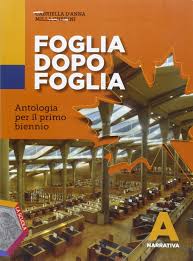
Dissemination
Title of Activity
The science fiction genre: literature and cinema
Description of educational activity
Duration: 5 hours
Pupils’ age: 14-16
Organization of the class of pupils: group work
Pupils' tasks: Pre-requisite for the students is having read some science fiction short stories. Students are asked to read aloud in turns, then a debate is started on characteristics and trends of the science fiction genre. Students are invited to collect data on filmography, from “Le voyage dans la lune” by G. Mèliés (1902) to the latest films. Each student’s task is to trace the original poster of the film on the Internet and download it on a memory stick. All posters files with a brief presentation of the film will make up a chronological route of the genre for a power point presentation.
Support materials: The teacher proposes again F. Brown’s short stories “Pattern” and “Sentry”, plus new stories, such as “The Pedestrian” “ by Ray Bradbury from “le meraviglie del possibile”; “Key Word” and the stories from “I Robot” by I. Asimov.
Evaluation and assessment method: The evaluation method is based on the observation of the cooperative behaviour of students who work together on a project, each of them giving their contribution. Each student will feel personally involved in the learning process, as he will be the one to choose the film and write its presentation.
Connection to curriculum
Grade: 2nd grade
Knowledge:
- The science fiction genre and narrative structures and techniques of the genre
- Authors and stories of the science fiction genre: I. Asimov, F. Brown, R. Bradbury
- Science fiction cinema.
Skills:
- Grasping the specific traits of a literary text
- Mastering the linguistic structures in the texts
- Understanding the message inside
- Understanding and producing audio-visual products.
Competences:
- Reading, understanding and interpreting written texts of different kinds, and in particular, using the narrative instruments to interpret a film
- Making comparisons between literary texts and films
Bibliographic reference to be used during the activity
The science fiction “Key Item” by I.Asimov can be found in the Italian anthologies of “Biennio”, as for example in the text by Gabriella D’Anna, Milla ghedini, “Foglia dopo foglia” vol. A, La Scuola Editore (pag. 273-275)
ISBN 978-88-3504178-8
n. pagine 736
2015

Digital sources
There are many sites on the Internet dedicated to Asimov, science fiction and films of that genre. Here are those consulted and given to students:
- http://www.laterza.it/indici/9788842112020_capitolo.pdf
- https://oggiscienza.it/2014/10/22/il-cinema-di-fantascienza/
- http://www.mymovies.it/film/fantascienza/
- http://www.film.it/film/generi/genere/film-fantascienza/
Results
Students have learned to appreciate the science fiction genre; they got so passionate about reading this genre that they are going to read the short stories collections of the three authors (Asimov, Bradbury, Brown). Students already knew the film genre, but thanks to the project, they have expanded their knowledge, sharpened their skills of analytical observation and made textual competences better in the comparison between the two languages: Cinema and Literature
Recommendations
Motivating students means indulging their tastes and encouraging their personal choices; the science fiction genre is one of the favourite among the young generations of readers. On the other hand, the film language offers many different catchy stimuli especially thanks to the use of special effects in science fiction. Encouraging reading narrative texts through the relationship between cinema and literature has given tangible results: finding out that behind a film there is reference literature has triggered curiosity towards reading.
Contact
X gimnazija ''Ivan Supek''
Ul. Vjekoslava Klaića 7
10000
Zagreb
E-mail: partners@handbook4rspreaders.org











